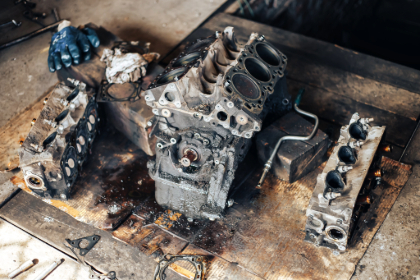INDEPENDENT DEALER
Fort Worth, TX & Southlake | (888) 459-9958 / (817) 431-6664
Ace Hi Oil
OUR BLOG
06/06/2025
Nobody wants a broken-down engine. One of the ways to prevent that from happening is to be aware of and avoid the worst things that can happen to your engine. For more information on the matter, read this post by Ace Hi Oil in Fort Worth, TX.

Your engine is the heart of your vehicle, and like any vital organ, when it fails, everything else stops working. Engine problems are not only expensive—they can also leave you stranded at the worst possible time. While routine maintenance can prevent most issues, certain engine failures are catastrophic. Here’s a closer look at the worst things that can happen to your engine and how to reduce your risk of facing them.
Lessen the risk! Call Ace Hi Oil in Fort Worth, TX, at (817) 431-6664 or visit AMSOIL's online store to maintain your engine perfectly with their top-quality products.
The Worst Things That Can Happen to Your Engine
1. Throwing a Rod
Throwing a rod is one of the worst things that can happen to your engine due to its destructiveness. The connecting rod links the piston to the crankshaft, and if it breaks loose—usually due to lack of lubrication or extreme stress—it can punch a hole through the engine block. This often results in total engine failure. Repairing a thrown rod typically requires an engine rebuild or full replacement.
Prevention Tip: Keep up with oil changes and avoid high RPM driving or over-revving, especially in older or high-mileage vehicles.
2. Blown Head Gasket
The head gasket seals the engine block and cylinder head, preventing oil and coolant from mixing and maintaining compression in the cylinders. When the gasket fails, coolant may leak into the engine, or exhaust gases can enter the cooling system. Symptoms include white exhaust smoke, overheating, and milky oil.
A blown head gasket can lead to overheating, warped cylinder heads, or further internal damage if ignored.
Prevention Tip: Watch your engine temperature gauge, don’t drive an overheating vehicle, and check coolant levels regularly.
3. Cracked Engine Block
The engine block houses the cylinders and internal parts of your engine. When it cracks—often from freezing coolant or extreme overheating—your engine can leak oil or coolant, lose pressure, and ultimately fail.
Cracks are usually irreparable, and a cracked block often means engine replacement.
Prevention Tip: Maintain proper coolant levels, use the right antifreeze mixture, and never ignore signs of overheating.
4. Timing Belt or Timing Chain Failure
Your engine’s timing belt or chain synchronizes the camshaft and crankshaft, ensuring valves open and close at the right times. If the belt snaps or the chain fails, the pistons can collide with open valves, causing major internal damage, especially in interference engines.
Timing belt failure often leads to bent valves, broken pistons, and ruined cylinder heads.
Prevention Tip: Replace the timing belt or chain according to your manufacturer’s recommended schedule—usually between 60,000 and 100,000 miles for belts.
Don’t let dirty motor oil ruin your engine! Use AMSOIL's Signature Series 0W-20 Synthetic Motor Oil, the best synthetic oil in Fort Worth, TX, to replace it regularly and maintain your engine perfectly.
5. Oil Starvation
Oil lubricates moving parts, reduces friction, and helps manage engine temperature. If your engine runs out of oil due to leaks or consumption—or if oil can’t circulate due to sludge or a failed pump—the internal parts will grind against each other and quickly overheat.
Oil starvation can cause bearings to seize, rods to break, and permanent internal damage.
Prevention Tip: Check your oil level monthly, and always investigate oil pressure warning lights or burning oil smells.
6. Hydrolocking
Hydrolocking occurs when water enters a cylinder through the air intake. Since water doesn’t compress, the piston hits resistance when it tries to complete a stroke, which can bend or break connecting rods instantly.
Driving through deep water or flooding can cause this, and the damage is often severe.
Prevention Tip: Avoid driving through high water or flooded roads. If you stall in deep water, don’t try to restart the engine.
7. Overheating
Consistent overheating can warp cylinder heads, crack engine blocks, and blow head gaskets. An overheated engine weakens key components, and driving it in that state can turn a minor cooling system issue into a major engine failure.
Prevention Tip: Monitor your temperature gauge, check coolant levels, and address any leaks or radiator problems immediately.
Call Ace Hi Oil in Fort Worth, TX, at (817) 431-6664 or visit AMSOIL's online store to find the top-quality products that can help prevent some of the worst things that can happen to your engine.
CONTACT
Norman Rinehart
2900 Knight Ct
Southlake, TX, 76092
United States
United States
(888) 459-9958
(817) 431-6664